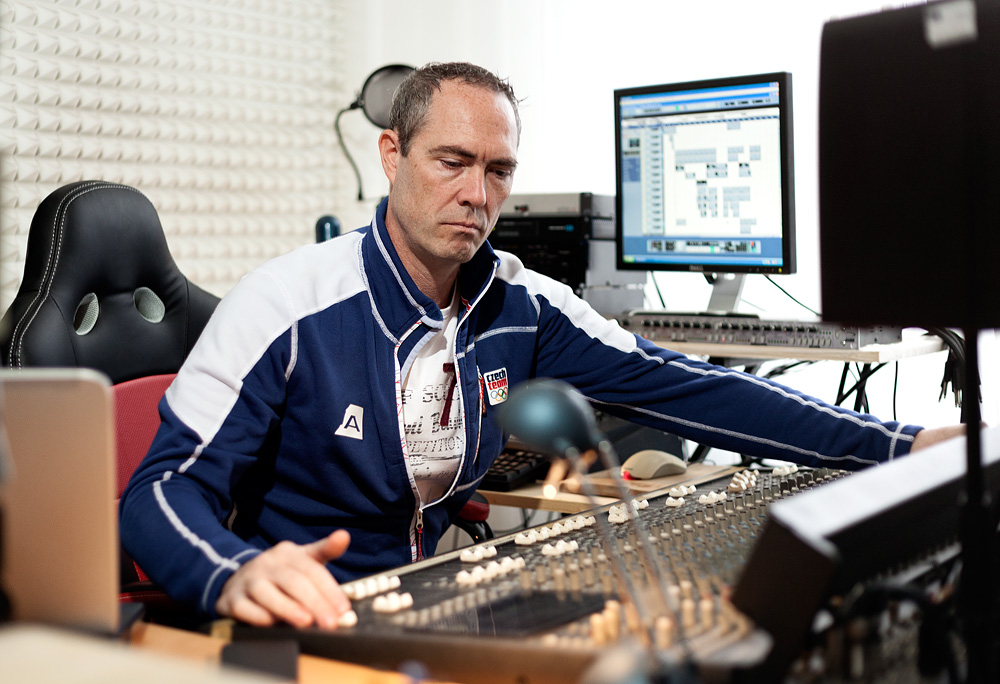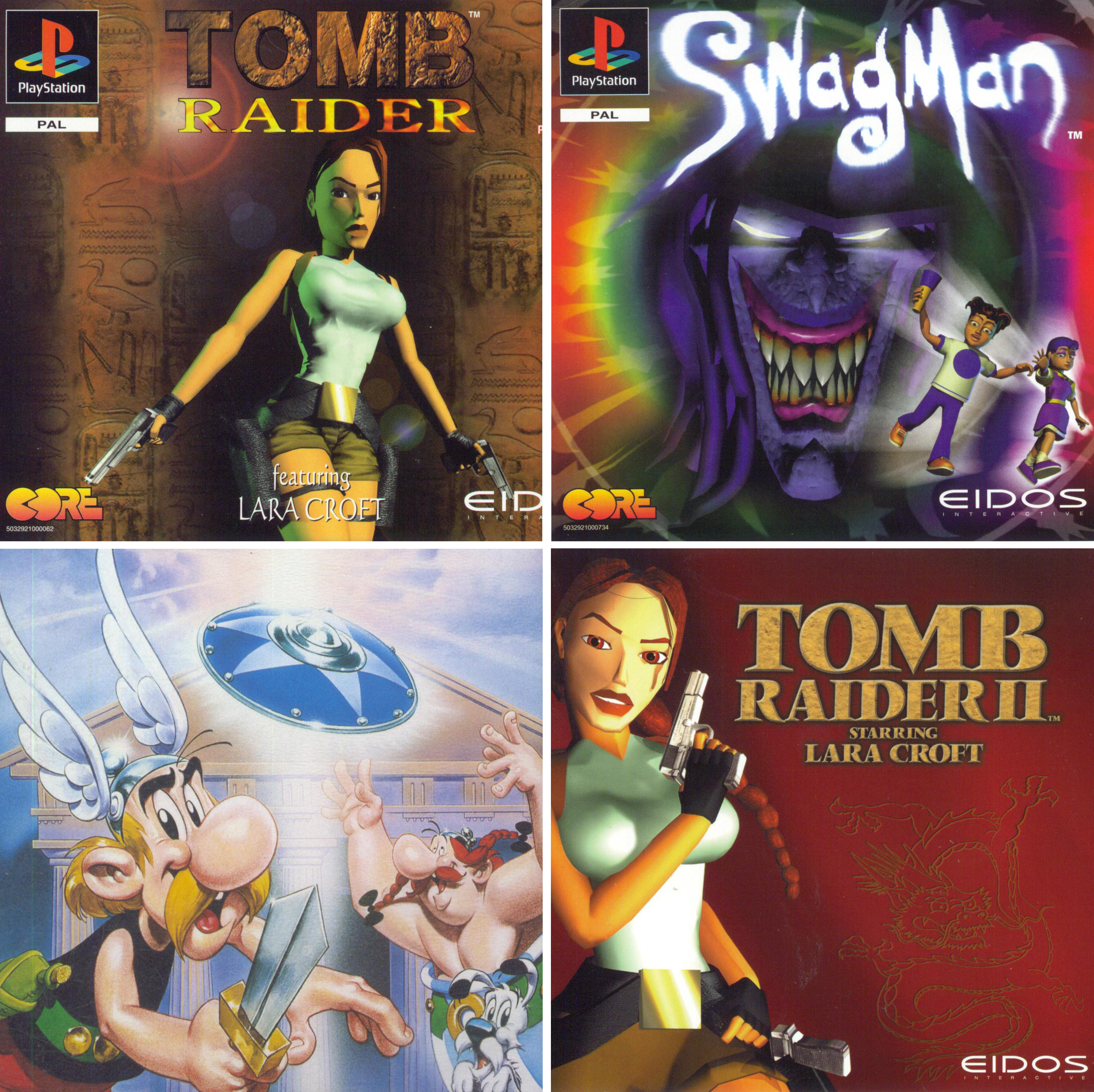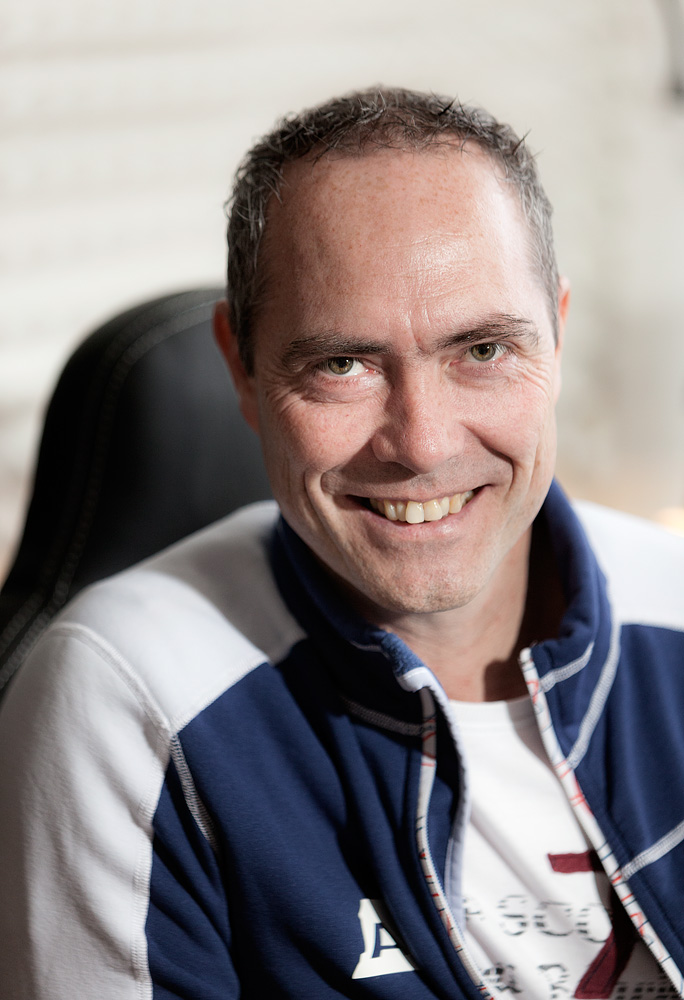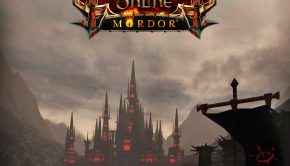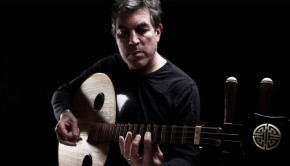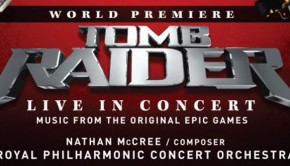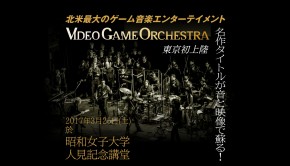Nathan McCree Interview: 21 Years of Pioneering Game Audio
Nathan McCree is best known for creating the gorgeous music and sound effects for the original Tomb Raider trilogy. However, he has worked on numerous other projects during his 21-year career: from tacking the Mega Drive sound card for Asterix, to stepping in as audio director on Silent Hill and LEGO franchises, to even writing a song for The Spice Girls.
In this indepth and honest interview, McCree discusses his journey to becoming a game sound creator and shares his experiences on his works past and present. With the help of Harry Hinds and the Music of Tomb Raider community, we ask him to recollect his work on the Tomb Raider franchise and ask whether his soundtracks will be released on CD. Along the way, he provides some rich insight into technical aspects of creating game sound and discusses how he was called in to rescue the audio for more than a few big franchises. McCree supplemented this interview with a series of MP3s showcasing his defining works.
Interview Credits
Interview Subject: Nathan McCree
Interviewer: Harry Hinds, Chris Greening, Tomb Raider Community
Editor: Chris Greening
Coordination: Chris Greening, Harry Hinds
Interview Content
Harry: Nathan McCree, many thanks for taking the time to talk to us today. First of all, could you tell us about your musical background, education, and influences?
Nathan McCree: My father is very musical and I remember when I was a child he was always listening to classical music on the home hi-fi when he was at home. He would always make me listen and would test me to see if I could recognise the composer. I didn’t always get the answer right, but the process introduced me to a whole range of classical music from an early age.
My father also sang in the local church choir and so by the time I was six years old he had me enrolled as a chorister. I enjoyed singing in the choir and I would often stay late on a Friday evening after the other choristers had left, holding the treble line on my own against the rest of the adults. The choir was good training for me. It taught me a lot about harmony and, as a result, I would often make up my own harmony parts to pop tracks on the radio. I started learning to play the Piano when I was eleven and I developed a passion for synthesizers and electronic music.
It was around this time that we got our first home computer too – a Sinclair ZX81. I remember painfully typing in game programs word for word from magazine listings and being fascinated how it all worked. When I reached thirteen my Dad, recognising my growing interest in computers and electronic music, bought me my first keyboard – a Korg Delta. I used to borrow his 4-track reel-to-reel tape recorder and I would spend hours carefully layering synth patterns and making songs.
Harry: From there, what led you to becoming a video game composer?
Nathan McCree: By the time I was fifteen I started hanging out at a local 24-track recording studio with a friend of mine. When the studio had ‘down time’ we would use all the kit and record our own music. I guess the time I spent at this studio made me realise that I wanted to spend the rest of my life writing music. We formed a band and when I turned sixteen I was ready to leave school and try my luck in the pop world. My Dad was against the idea, however, and pushed me to do my A-Levels and to get a Degree – which I begrudgingly did.
In 1992 I graduated from Kingston University with a Degree in Computer Science and Software Engineering and started searching for a programming job. Eventually I found one with the legendary Core Design. My first assignment was to code a music sequencer for the Sega Mega Drive. I finished the project ahead of schedule so I used the remaining time to write some music using the sequencer to demonstrate what it could do. My boss liked the music so much that he asked me if I would like to write the music for Asterix and the Great Rescue. Of course I jumped at the chance. I had a job change overnight and have remained a composer and sound designer to this day.
Harry: You joined Core Design back in 1993. Could you share with us your early experiences at the company, writing the utterly catchy soundtracks for the Astérix series? What were the challenges of working with the 16-bit Mega Drive system?
Nathan McCree: I guess the most challenging thing was designing the PCI circuit board that would house the Yahama chip, identical to the one in the Mega Drive. Once I had that constructed and plugged into a PC I was then able to write the software to control it. When it came to actually writing music with this system there were of course further challenges. Firstly the Yamaha chip I was using only had six voice channels, which meant that it could only play six notes simultaneously. In reality I only had five channels for music, because I had to reserve one for sfx. Secondly, all the instrument sounds had to be programmed from scratch (there were no factory presets for example), so I had coded a sound editor as part of the sequencer which allowed me to program my own patches and to save them.
Another major challenge was actually using the sequencer. It was nothing like the sequencers you might use today. It was what was known in the trade as a music tracker. It looked a bit like a fruit machine, with six reels. Notes were added by using the cursor keys to scroll up and down and left and right across the reels. Once you had navigated to the required ‘slot’ you pressed one of the QWERTY keys which had been mapped to a piano keyboard, and this added a note. Something like this:
A=C3, W=C#3, S=D3, E=D#3, D=E3, F=F3, T=F#3, G=G3, Y=G#3, H=A3, U=A#3, J=B3, K=C4
There were other various hotkeys which did things like Octave Up and Octave Down and lots of other special commands which would provide real-time controls like vibrato and portamento. There were of course play and stop hotkeys so you could hear how things were sounding along with other loop commands that could be used to sequence the patterns that you were making. It was all really good fun but very limiting. You really had to work the sequencer to its maximum to make the thing sound any good.
Harry: Soon enough, though, you were writing soundtracks for CD-based systems, such as Soulstar (Mega CD), Dragonstone (Amiga CD32), and Swagman (PlayStation). How did you approach the composition and implementation of these titles?
Nathan McCree: Well it was a whole different ball game. Instead of 5-note polyphony, I had just under one hundred as I was able to sequence professional keyboards. I was using three at the time, each with 32-note polyphony. So it felt like I had limitless power. Also I was using Steinberg’s Cubase sequencer, which was vastly more powerful than the chip-based sequencer I had programmed for the Mega Drive. So it really was a different experience.
I drew on my influences as a child having listened to countless pieces of classical music on my Dad’s records. I wasn’t a trained orchestrator, but I knew how an orchestra sounded and, having studied music at A-Level, I knew about all the instruments and how they are put together to make different textures. So away I went. I wrote what I wanted to hear and what I felt was right for the project.
That said, the implementation approach was different for sure. Usually new technology brings new and improved functionality, for the composers though, this time we lost something. With chip-based music we were able to loop tunes seamlessly but with the new CD-systems, although we had more storage memory, run-time memory was still limited so the digitally recorded music was streamed off disc in real-time (normal CD playback). The added ‘seek time’ required by the CD laser head unfortunately introduced a few hundred milliseconds of silence while the laser head repositioned itself at the start of the track.
As a result of all this, I had to rethink how best to use CD music in games. I had more memory for music for starters so this helped and, in fact, shaped the way I wrote music for the projects to come. With more memory I wrote longer tunes. The tunes became more story-telling and location specific and were repeated or reused less often throughout the game.
Harry: Could you tell us a little more about the differences in sound design (beyond music composition) for CD-based vs. cartridge-based systems?
Nathan McCree: Cartridge-based systems had very limited memory and, although audio sample technology was available, it wasn’t possible to use sampled sounds for all the audio effects without compromising other aspects of the game, like graphics for example. There was only so much memory to go around. (In fact to this day there are still memory ‘fights’ between the discipline directors!) So I would use my handy Mega Drive Sound Editor to synthesize all the individual effects I needed for each game. Typically there would be something like thirty to fifty sound effects.
The CD-based consoles as I mentioned earlier, provided much more memory to play with so for the first time I was able to sample not only the music (digital recordings) but also every single sound I needed for the game, and not just thirty or fifty, but hundreds. With the advent of mp3 technology this number multiplied quickly. (Games these days often have thousands of individual sound effects). So the sound design was different. I would typically source my sound effects from three places. 1) Sound Effects library CDs, 2) Synthesizers / sound generators / sound processing software or 3) recording stuff in front of a microphone (often mimicking the sound I needed with my mouth and then processing it to make it sound just right). In addition to the increased number and quality of the sounds I could make with the CD-based consoles I was able to use the music streaming system of the console (normal CD track playback) to play long ambience tracks instead of a piece of music, enabling me to provide a much more detailed and realistic audio landscape for a particular location.
Harry: Did these titles prepare you for Tomb Raider?
Nathan McCree: Sure, these earlier titles prepared me for Tomb Raider. I learned a great deal about the machines I was working on and the capabilities of the sequencing software. By the time Tomb Raider came along I had even more powerful synthesizers with better sounding instruments.
Harry: Released in 1996, Tomb Raider is almost two decades old. Looking back, how do you feel about the project and its soundtrack all these years later? Did you expect it to be a smash hit? How do you feel when people continue to express gratitude for your music at events like Video Games Live?
Nathan McCree: I am immensely proud to have been a part of the team that started it all. None of us expected it to be the hit it was. It really took us all by surprise. As far as my work goes, in general I am pleased with what I achieved with the time and resources I had. It’s great hearing from the fans and events like Video Games Live are just amazing. I remember being invited to submit two pieces from my Tomb Raider scores for their first show at Hollywood Bowl in Los Angeles. It was a dream come true to watch the LA Philharmonic orchestra play the Tomb Raider Main Theme and Venice to eleven thousand people. I was completely blown away!
Harry: The mentioned Tomb Raider main theme has become an iconic emblem of the franchise, featuring in almost every score since. Did anything in particular inspire the Tomb Raider motif? Was it enjoyable to find different uses for it across Tomb Raider II and Tomb Raider III?
Nathan McCree: I remember speaking to Toby Gard about the music for Tomb Raider. He told me a lot about the character of Lara Croft. She was a beautiful English girl, classy and intelligent. He wanted the music to reflect that. We quickly decided that English classical music would be a good fit. I needed to add a sense of beauty into the music, and usually in life the simplest things are the most beautiful. So I kept the melody simple.
In terms of arrangements, yes I enjoyed working with the melody. Its simplicity makes it easy to adapt different orchestrations, harmonies and moods. I particularly enjoyed writing the Theme Tune for Tomb Raider III.
Harry: Looking back on your work on the series, it’d be interesting to hear about your favourites. Which is your favourite score of the trilogy? Beyond the main theme, which pieces are you most proud of and why?
Nathan McCree: Out of the three, I think I probably listen mostly to Tomb Raider. There is an intimate feeling about the pieces in that score which I find pleasant to listen to, and of course it brings back some fond memories. Pieces from the three games which I am most proud of would be:
“Where The Depths Unfold” – Tomb Raider. Back in 1996 we didn’t have the budget for a live orchestra or choir, so making this choral piece using just synthesizers was something of a challenge. I remember spending hours editing volume curves for the choral parts to make them sound more expressive and as close to a real choir as possible (and it’s far from perfect). Listening to it over and over again, eventually I realised there was something missing – my choir wasn’t breathing! So I spent the next few hours recording myself lots of times breathing in all the right places, and then layering these on top of each other. Mixing these in with my synthesized choir, it started to sound something like a real choir. The end result was not bad for a synth!
“The T-Rex” – Tomb Raider. I guess I’m proud of this piece because it was just right for that moment in the game. When the T-Rex makes a b-line for Lara and this tune kicks in, your heart rate is sure to increase! It is a memorable moment in Tomb Raider.
“Venice” – Tomb Raider II. This was an exercise in stylistic writing. I wanted to create a piece which sounded like it had been written by some famous Baroque composer. I wanted people to think they had heard it before but just couldn’t remember what it was called or who wrote it. So I studied a few contemporary composers of the time, Vivaldi, Bach etc., and set to work. In many places the piece features a small ensemble of strings and it was a big challenge getting them to sound real, particularly the violins and violas. This of course was the piece which I would be using for the Venice level in Tomb Raider II so it had to say ‘Venice’ from start to finish. In the end, I think I got that.
“The Puzzle Element” – Tomb Raider III. This was a bit of an experiment really. I needed a piece of music which I could play whenever Lara had a difficult puzzle to solve. I wanted the music to sound puzzling and confusing, so I thought, let’s pick five notes and write a tune using only those five. And that’s what I did. The tune itself plays patterns of nine notes rotating around the chosen five. Each time the pattern begins it starts on a different note of one of the chosen five until it comes full circle back to the beginning again.
Harry: While you scored the first three titles in the Tomb Raider franchise, multiple composers have worked on the subsequent games and films. Did you follow their works and, if so, how did you feel about them? Do you feel the composers did justice to your original score, for example on Tomb Raider: Anniversary or the various incarnations of the Tomb Raider main theme?
Nathan McCree: Yes I’ve listened to every single track of every release of the Tomb Raider series – and not just once either, many times. Some of the music I think is really great and some of it, not so great. And I say that with no disrespect to any of the subsequent composers. I would say the same about my own work. Writing music for games is not as glamorous as you might imagine. Usually time is not on our side and we are required not only to compose, but to orchestrate, mix and produce. The computer games composer needs to be a pretty talented chap for sure. When you’re writing even only ten tracks for a game, you would be hard pressed to make every one of them brilliant. These days, guys are writing between fifty and one hundred tracks per game and sometimes more. It would be wrong to expect every one of them to be a number one hit.
I enjoyed listening to Troels Folmann’s renditions of the Tomb Raider music for Tomb Raider: Anniversary. It was interesting to hear someone else’s take on the themes. I thought he did a good job. He used a slightly bigger orchestration than I would have used, but that’s just my personal preference. And yes of course it’s always nice to hear that oboe melody making its appearance in the various theme tunes over the years. It’s quite a humbling experience.
Harry: After Core Design, you established an independent audio production company, offering music, sound effects, and audio direction for numerous titles. How did you attract diverse clients to recruit you for your soundtrack? How did working on sports, music, and casual games compare to working on traditional action-adventures and platform games?
Nathan McCree: Many of the contracts I have won over the years have been with people who I have worked with before or who knows someone I have worked with. Word of mouth is extremely important when you’re freelance. Pitching to new clients is always difficult and I guess I did it the same way as everybody else. Sure having Tomb Raider on my portfolio was a big help and it certainly opened up doors wherever I went, but do not be mistaken, it certainly did not guarantee winning the contract. I have lost too many pitches over the years to care to remember. I certainly wanted to diversify and I guess my enthusiasm for new projects and ideas inspired people to hire me.
It doesn’t really matter what genre of project I’m working on, the process for development is usually the same. There is an investigatory period, where you research the project and determine what audio requirements there are. After that, I would produce an audio asset list which details every sound, every tune and every line of voice over for the project. During this phase I will also iron out any technical problems that might need addressing. After that comes production. This is when the audio assets are made and implemented into the project. Finally, there is testing where we check to see if the designs have met the requirements. If not we would iterate the production phase.
I can’t say that I prefer working on any particular genre more than another. Each project brings its own set of challenges, and I love my work so much that I enjoy every day I go to work – something which few people can say about their own job.
Harry: You’ve also participated in numerous non-game works, among them commissions for Granada Television, Smithereen, London 2012 Olympics, and even The Spice Girls. What experiences were most memorable for you?
Nathan McCree: Without a doubt, it has to be The Spice Girls. I was commissioned to write the Intro music for their Christmas Show 1999 “Christmas in Spiceworld”. They invited me to the show with complimentary front row seats so of course I went.
As I was travelling down to London to go to the show, I was very much aware that I still had not signed a contract with them for the work that I had done. When I arrived at the stadium, I was met by a representative of their team and escorted to one of their mobile offices backstage. Their business manager handed me the contract. (This was one hour before the show was due to start.) After quickly scanning through the ten or so pages I realised that it did not match what had been agreed previously over the telephone. I pointed this out and told the guy I would have my lawyer correct the clauses that were wrong. They agreed, but the clock was ticking. The contract needed to be signed and agreed before the show went live on international television! I remember running through the streets of Earls Court, frantically searching for somewhere with a fax machine that I could use.
To cut a long story short, I eventually made it back to the Stadium with the corrected contract in my hand about fifteen minutes before the show. We signed, I bought myself a beer, made my way to my front row seat and waited. Pretty soon the lights went dim, the crowd hushed a little and my tune kicked in. At this point twenty two thousand people jumped to their feet screaming! My heart was pumping like never before. It was an amazing experience!
Harry: More recently, you served as the audio director for several major games. Could you tell us about how you approach Silent Hill: Downpour, Rush ‘N’ Attack, The Lord of the Rings: Aragorn’s Quest, Sniper: Ghost Warrior 2, and the LEGO franchises? How did you develop the audio for these titles while staying faithful to the roots of their franchises?
Nathan McCree: To be honest, much of my work as an Audio Director has been about rescuing projects. By that I mean I was hired to assess the current status of the audio and then to develop a plan to bring the audio back on schedule and to deliver the end product to the highest quality possible in the allocated time. This was true for the first four titles you mentioned above. As Audio Director, it was also my job to steer the projects creatively to make sure we have the music, sound and voice-overs in the right context. To answer your question I will describe (in not too much detail) the main points, what was missing and how I fixed those projects:
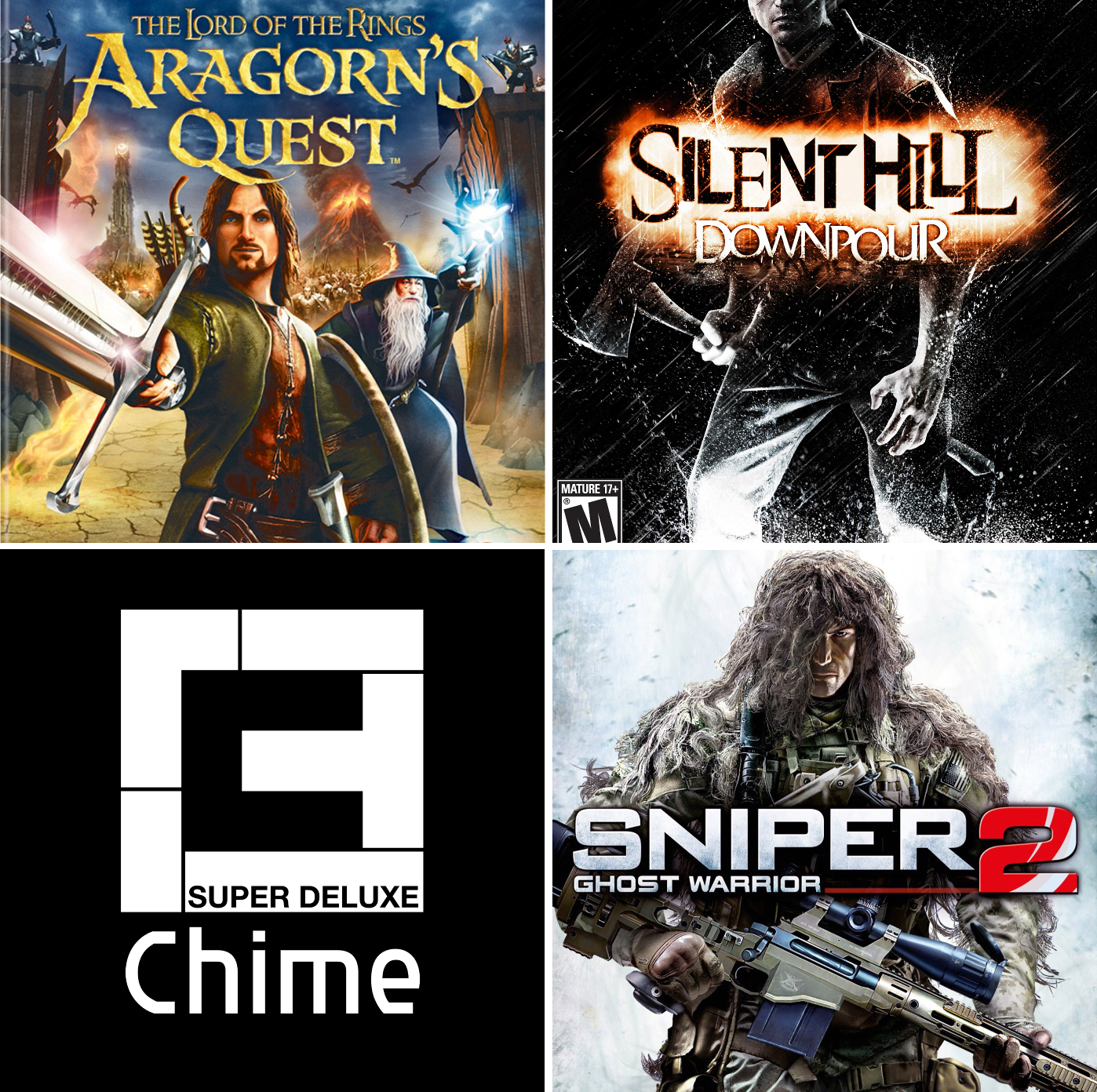
Silent Hill: Downpour: This project was suffering seriously from a lack of resources, i.e. man-power. The project had been in development for two years with only one junior sound designer for the entire period and he was also working on another project simultaneously. Needless to say, the project was in a complete mess. 80% of the sounds were missing and what was there was cluttered and noisy. The very first thing I said to myself when I was reviewing the project was “This is Silent Hill. Why is it so noisy?” (Anybody who knows anything about the Horror genre will know that if you are going to try and scare someone with a sudden loud bang, you have to have silence before it. Otherwise you have no contrast and the scare will not work). So the main task was to strip out the clutter and to rebalance the sound effects to make the project quiet! Once we had this, the game became frightening and we were able to build on this for the remainder of the development process.
Rush ‘N’ Attack: The original Rush ‘N’ Attack was in fact a title called Green Beret, released by Konami as an Arcade coin-op machine. If my knowledge is correct the circuit boards were 16-bit, and the audio was chip-based, something very similar to the mega-drive system. Of course we weren’t going to replicate this audio system for the remake. The plan was to bring Green Beret up to date with a complete makeover. Staying faithful to the franchise however was important and as the original was an arcade game, we designed the audio to sound like an arcade game rather than making everything sound like real life. The sounds were quick, punchy, exaggerated and energetic, and to bring the project up to date, many of the sounds were contemporary and in some cases futuristic. One very important sound which we kept from the original title was the Alarm Siren you hear at the beginning of the game. We took that sound and triggered it at the start of our first level. It was a piece of nostalgia that just had to stay.
Lord of the Rings: Aragorn’s Quest: This project was missing a touch of magic – quite literally. Again I was brought onto the project in the later stages to fix and direct the final stages of development. Many of the audio systems were incomplete or not functioning properly, and time was short. In addition to this the project didn’t really sound like Lord of the Rings. What was missing? Magic! The combat sounds, the pickups, the GUI (graphical user interface), the HUD (heads-up display), the ambiences, everything just sounded normal. There was no magic. So I started with the combat sounds as these were the sounds you heard most often, and I designed a three-level system of magic effects which would be triggered as you achieved your combo melee attacks. As magical effects was gradually added into the project it sounded closer and closer to the surreal world of Middle Earth.
Sniper: Ghost Warrior 2: This project too was another rescue mission. Not so much from an asset creation point of view but in a technical one. It was suffering from memory problems, i.e. it was using too much. So my main focus was to identify when we were breaking the memory and then to work on a strategy to mitigate the problem. From a contextual point of view it was my job to review the audio and to make sure we were delivering as higher quality as possible. Sniper: Ghost Warrior 2 was effectively a sniper simulator, so the audio needed to reflect that. We needed to get everything sounding as real-life as possible. I therefore paid close attention to the environment sounds and how the depth-queuing and low-pass filters were operating within the engine as these settings were crucial for achieving a realistic sonic environment.
LEGO Franchises: The LEGO Franchises have been fun to work on. In many cases the audio assets have been supplied from the original franchise like with Star Wars for example. So staying faithful from a stylistic standpoint is pretty straightforward. The jobs mostly require audio systems design and implementation whilst always keeping an eye on quality and balancing. Some of the projects of course require extra sound design and music, so I will fill these gaps where required without deviating from the style of the supplied audio assets.
Harry: You served as audio manager for the critically-acclaimed indie puzzle game Chime. Could you tell us about your role on this project? How did you develop such a rich licensed soundtrack?
Nathan McCree: It was my job to bring the audio to completion on schedule and to the highest quality possible. The licensing was handled by my boss at the time, Ciaran Walsh. In fact he designed the game. Joe Hogan (one of the senior members of the Sound Design team) and I were principally involved with developing and testing the music engine and providing feedback to the programmers until we had a system that did exactly what we wanted.
When a track was delivered to us by one of the composers, we had all the stems separate. We chopped up each stem into small segments ready for triggering in the music engine. In addition to this I would write extra musical parts in the same style which we would then trigger at various moments when the player achieved something, like filling one of the quads for example. Each tune had to be very carefully constructed so that at any point, any one of the musical triggers would work harmonically and rhythmically with the underlying bed of music. It was a fantastic challenge but amazing fun, once we had it all working.
We made our first release with just five tracks/levels. Later for the Super Deluxe version we increased the tracks/levels to twelve which included a track I wrote myself, “Machine Dream”.
Harry: You’ve told us that you have all the assets for your productions dating back to 1993. Would you consider making some of your soundtracks available through SoundCloud, Bandcamp, or CD? A lot of fans have been crying out for official soundtracks to be released for the Tomb Raider trilogy for years. Would you be interested in making it happen?
Nathan McCree: Yes of course, and it is something which I am working on.
Harry: Fans are eager to learn more about your upcoming works. You’ve been teasing an upcoming announcement for months now across social media; are you able to give any hints on what to expect? What other projects are you currently attached to?
Nathan McCree: The only hint I can give right now is that it will be music. In May 2013 I decided to go freelance again. Having been Audio Manager and Director for five years, I was missing what I love most of all which is writing music. So I’ve been working on a few personal projects over the last eighteen months. The first of these I am hoping to announce very soon.
As for other projects, yes I am currently working on an interactive motion comic called Redemption: The Challenge for Eden Films. It’s a great story and I’m working with an old friend and colleague from Core Design, Rolf Mohr who is providing the artwork. For anyone who’s interested, here is the link.
Harry: Many thanks for your time today, Nathan McCree. Is there anything else you’d like to say about yourself or your works? In addition, do you have any message for Tomb Raider fans around the world?
Nathan McCree: I would just like to say a big thank you to all the Tomb Raider fans for your continued support. I promise you something big. It’s coming.
Posted on December 7, 2014 by Chris Greening. Last modified on September 6, 2015.

